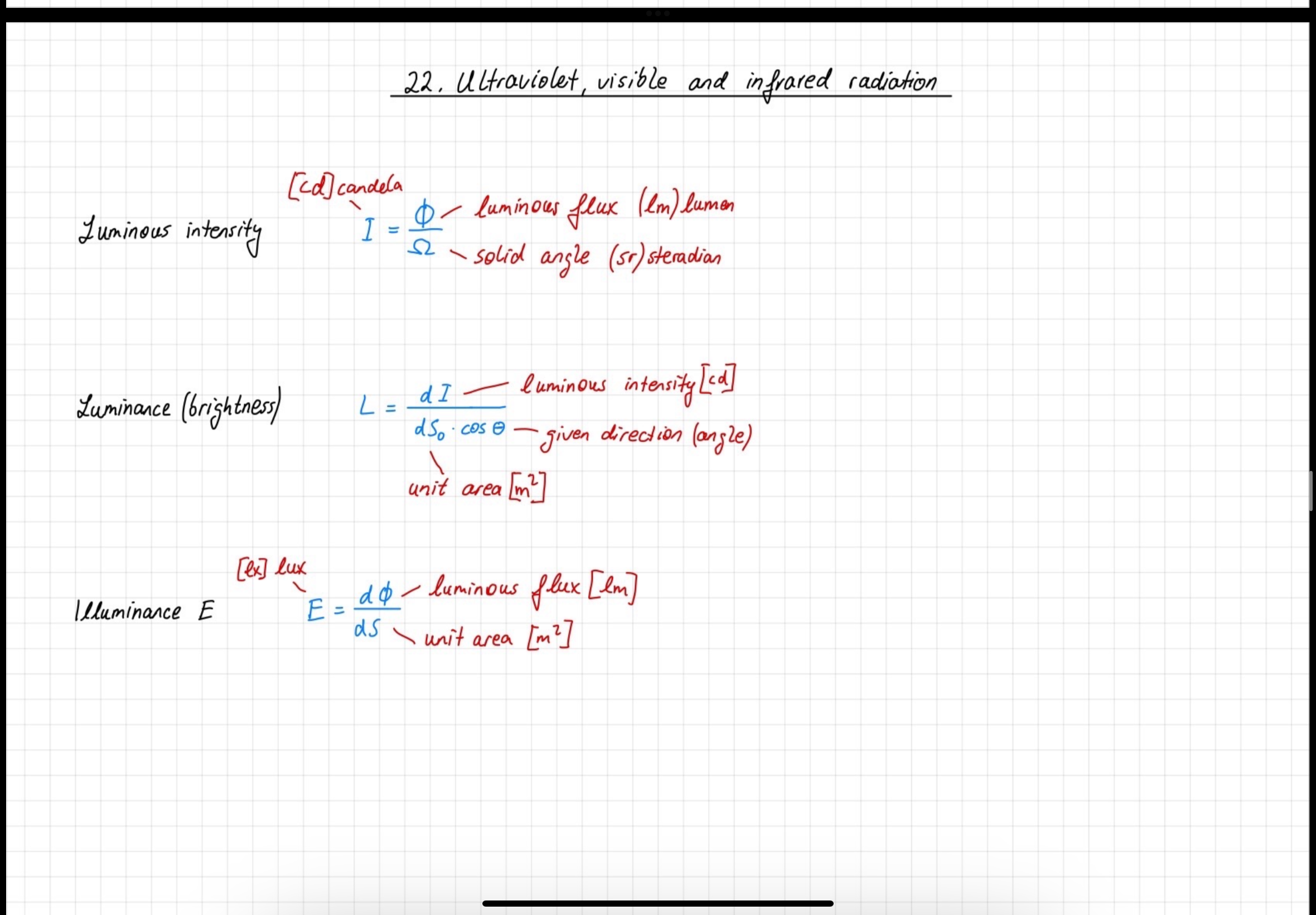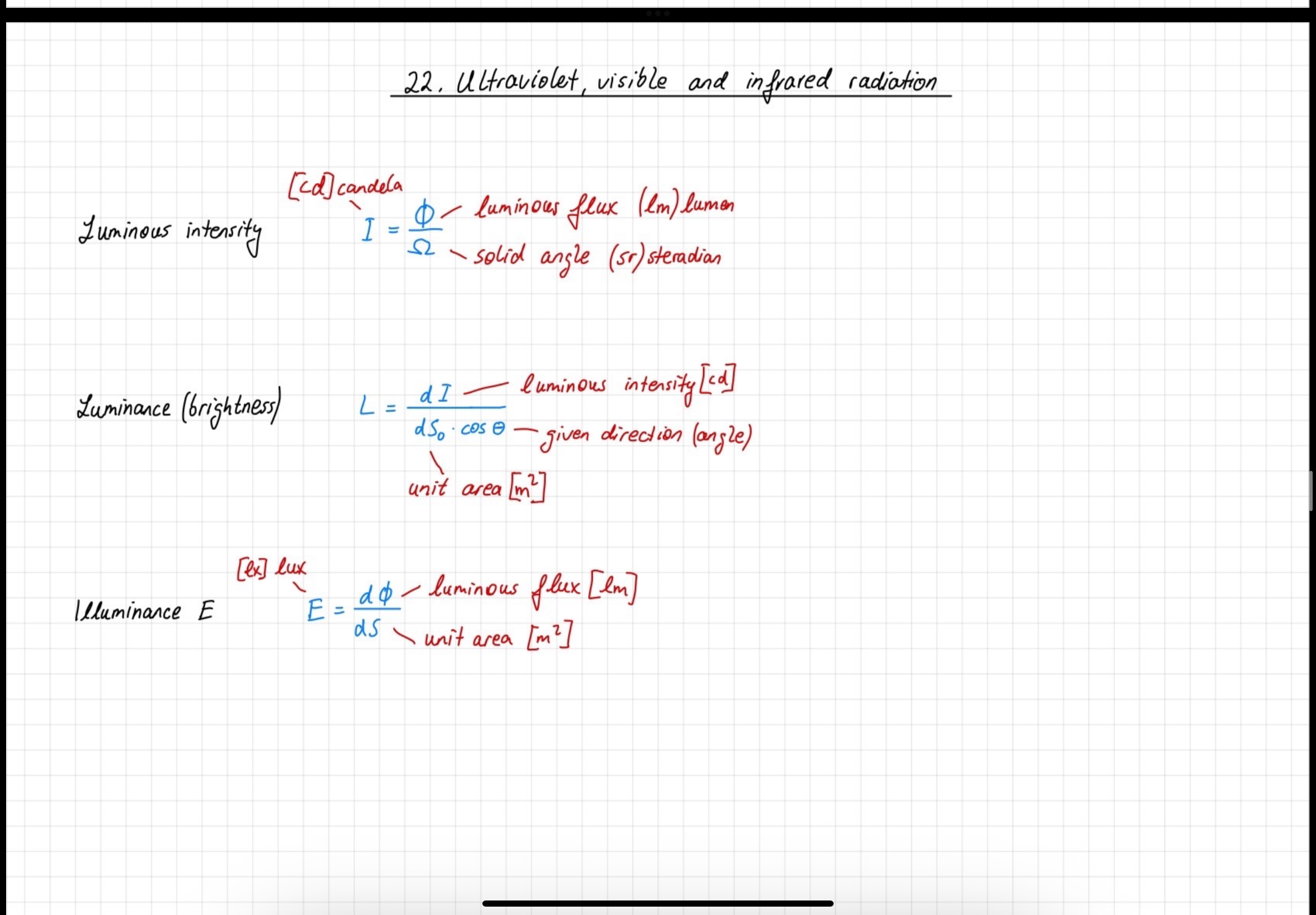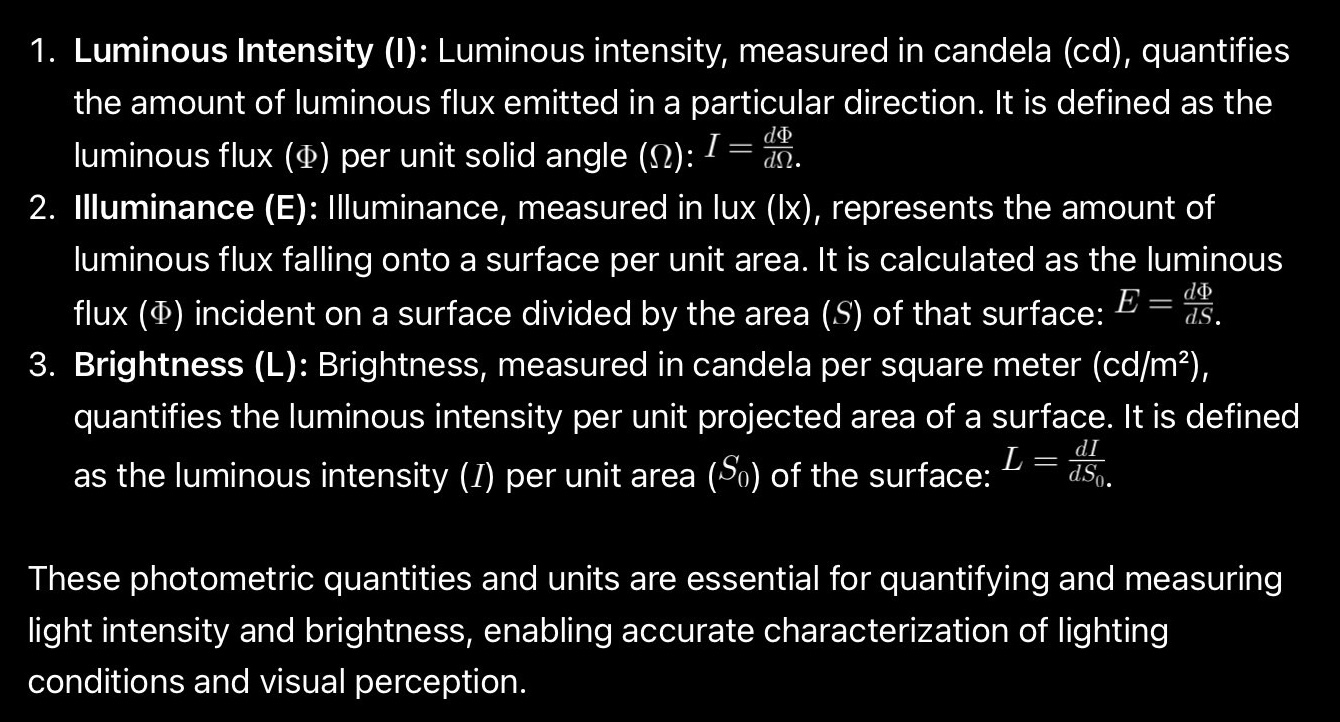22. ultraviolet, visible and infrared radiation
1/7
There's no tags or description
Looks like no tags are added yet.
Name | Mastery | Learn | Test | Matching | Spaced |
|---|
No study sessions yet.
8 Terms


electromagnetic waves
Transport Energy: Electromagnetic waves transport energy through space. They are formed by the coupling of electric and magnetic fields oscillating perpendicular to each other.
Self-Propagating: These waves are self-propagating, meaning they can travel through a vacuum without the need for a medium. This distinguishes them from mechanical waves, like sound waves, which require a medium (like air, water, or solids) for propagation.
Velocity: The velocity of electromagnetic waves is constant and equals the speed of light, denoted by 'c. In vacuum, the speed of light is approximately 3 × 10° meters per second (3 x 10* m/s).
Index of Refraction: When electromagnetic waves travel through a medium other than vacuum, their velocity changes. The index of refraction (n) of the medium is defined as the ratio of the speed of light in vacuum (e) to the speed of light in the
medium (v).

electromagnetic spectrum
Range of Frequencies: The electromagnetic spectrum encompasses all frequencies of electromagnetic radiation, from low to high frequencies.
Classification by Wavelength: Electromagnetic radiation is classified into different categories based on wavelength, including radio waves, microwaves, infrared, visible light, ultraviolet, X-rays, and gamma rays.
Categories: The categories are:
Radio Waves
Microwaves
Infrared
Visible Light
Ultraviolet
X-rays
Gamma Rays
Visible Light: Human vision responds to a specific range of wavelengths within the electromagnetic spectrum, approximately 390 to 720 nanometers (nm).
sun radiation
Primary Energy Source: Sun radiation is the primary source of energy for all living organisms on Earth.
Mixture of Electromagnetic Waves: Sun radiation comprises a mixture of electromagnetic waves, spanning from infrared to visible and ultraviolet wavelengths.
Sun's Position and Properties:
The sun is located at the center of the solar system.
It is approximately 150 million kilometers from Earth.
The flux of solar radiation at the Earth's surface is about 63 million watts per square meter (63 × 10° W/m').
Factors Affecting Energy Received on Earth's Surface:
The amount of energy received on the surface of the Earth depends on factors such as:
The angle of the sun with respect to the surface (e.g., zenith angle).
The path of solar radiation through the Earth's atmosphere, which can affect absorption, scattering, and reflection.
These factors influence the intensity and distribution of solar radiation reaching different parts of the Earth's surface, impacting weather patterns, climate, and ecosystems.
spectral sensitivity of human eye
The spectral sensitivity of the human eye refers to its varying ability to detect light across different wavelengths. Most sensitive to green light (around 555 nm), the eye's sensitivity decreases towards the red and blue ends of the spectrum. This sensitivity is determined by the response of cone cells in the retina, which are tuned to short (blue), medium (green), and long (red) wavelengths, enabling color vision.
photometric quantities and units

properties of ultraviolet and infrared radiation & importance for the biosphere
Ultraviolet (UV) radiation has shorter wavelengths and higher energy than visible light. It's crucial for vitamin D synthesis in humans and other animals. However, overexposure can cause skin damage and increase the risk of skin cancer.
Infrared (IR) radiation has longer wavelengths than visible light. It's emitted by warm objects and is essential for maintaining Earth's temperature through the greenhouse effect. Without it, Earth would be much colder, making life as we know it impossible.
However, excessive IR radiation from human activities, such as burning fossil fuels, contributes to global warming and climate change.
Infrared thermography
Infrared thermography is a technique that detects and measures the infrared energy emitted by objects. This energy is directly related to the temperature of the object.
Infrared cameras capture this energy and convert it into a visual representation of temperature, allowing us to see variations in temperature across surfaces. This technology is used in various fields such as building inspections, electrical maintenance, and medical diagnostics, providing valuable insights into temperature distribution and anomalies that may indicate issues or areas of concern.